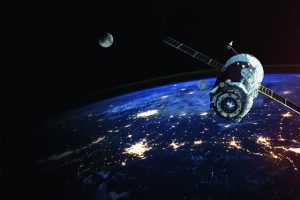Basically, it will provide a realistic lunar topography for testing spacecraft and rover sensors and systems, for both the company and third-parties. It’s based on a specific region of the Moon’s South Pole, to be precise.
The facility is dubbed the Lunar Surface Proving Ground (LSPG) and the test campaigns could range, for example, from supporting precise lunar landing technologies like LiDAR scanners and navigation algorithms to the use of lunar rovers and other robotic systems.
Measuring 100m x 100m, the test bed is expected to be completed later this year.
EDL
The first specific use of the site is expected to be testing EDL (Entry, Descent, and Landing) technologies aboard Xodiac, Astrobotic’s own suborbital rocket lander.
The LSPG will also be the test site for NASA’s Nighttime Precision Landing Challenge, part of the TechLeap Prize. Three winning teams will fly their sensing payloads aboard Xodiac to simulate landing on the Moon during the lunar night.
“The accuracy of the LSPG’s terrain will allow our customers to test their technologies using the closest physical copy of lunar terrain available on Earth,” said Jenna Edwards, Director of Propulsion & Test for Astrobotic.
“We already have four Xodiac campaigns booked to fly their payloads over the test field, and we’re excited to see how else we can leverage the LSPG to advance the readiness of other critical technologies.”
LunaRay
The LSPG is modelled after an actual map of the lunar surface scanned by Astrobotic’s LunaRay system.
“LunaRay is an industry-leading capability that Astrobotic has been perfecting for about a decade. LunaRay produces some of the highest fidelity maps of the Moon we’ve seen to date and we’re using it to construct the LSPG,” said Dan Hendrickson, vp of Business Development for Astrobotic.
“LunaRay will model the LSPG after the South Pole landing site for Astrobotic’s Griffin Mission One, carrying NASA’s water-hunting VIPER rover to the lunar surface in late 2024.”
The company is based in Pittsburgh, Pennsylvania, but the LSPG is at its Propulsion & Test facility in Mojave, California.
Image: Astrobotic
See also: Nasa backs Astrobotic for Moon power generation services
 Electronics Weekly Electronics Design & Components Tech News
Electronics Weekly Electronics Design & Components Tech News

